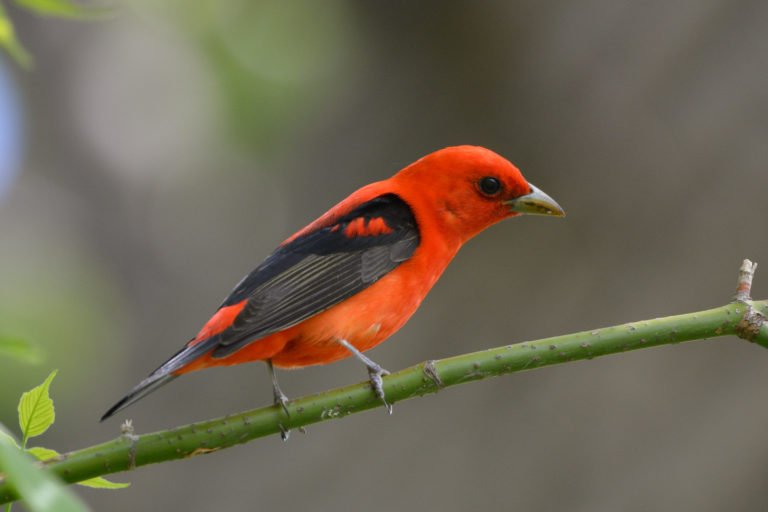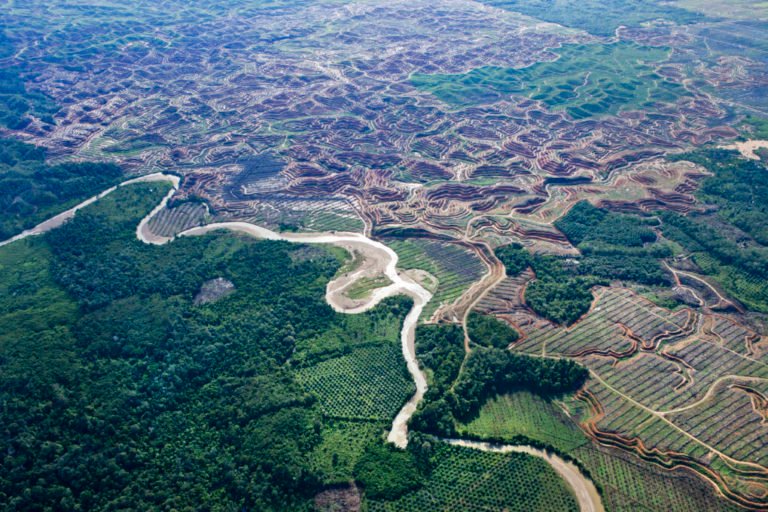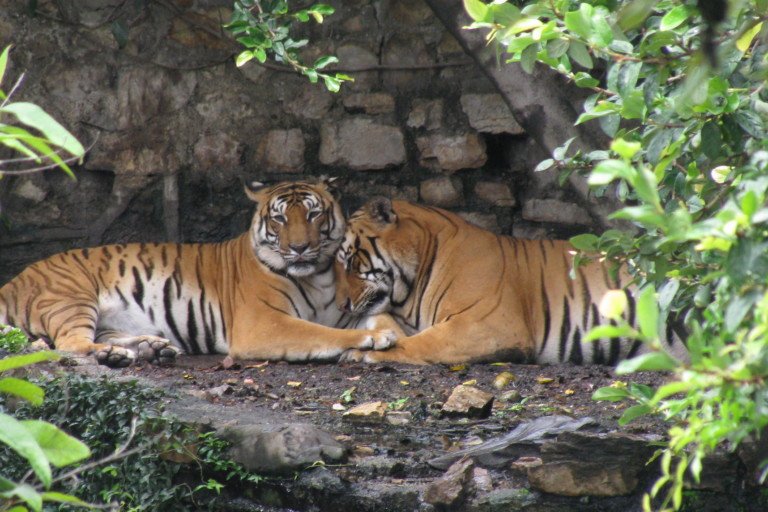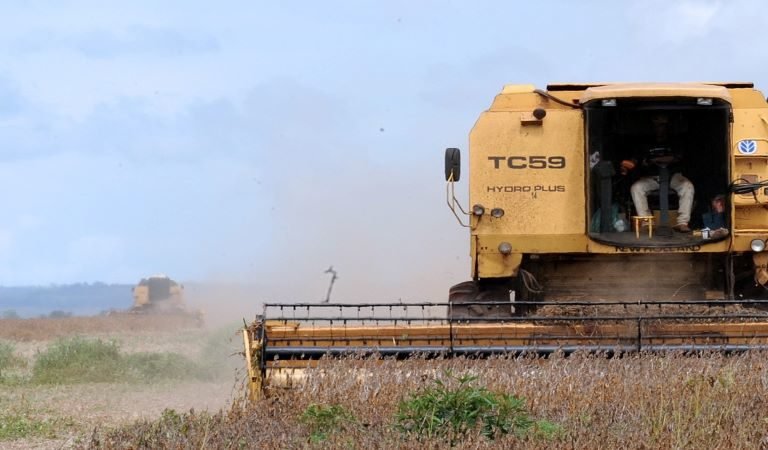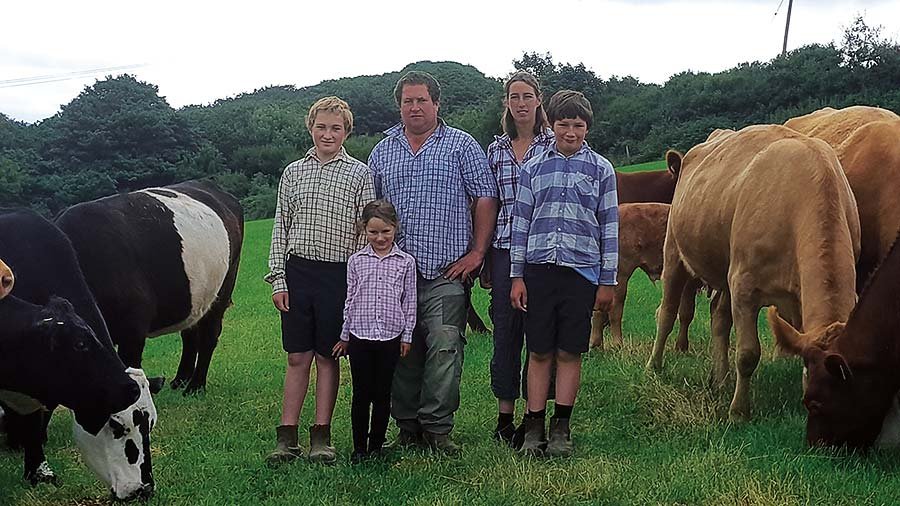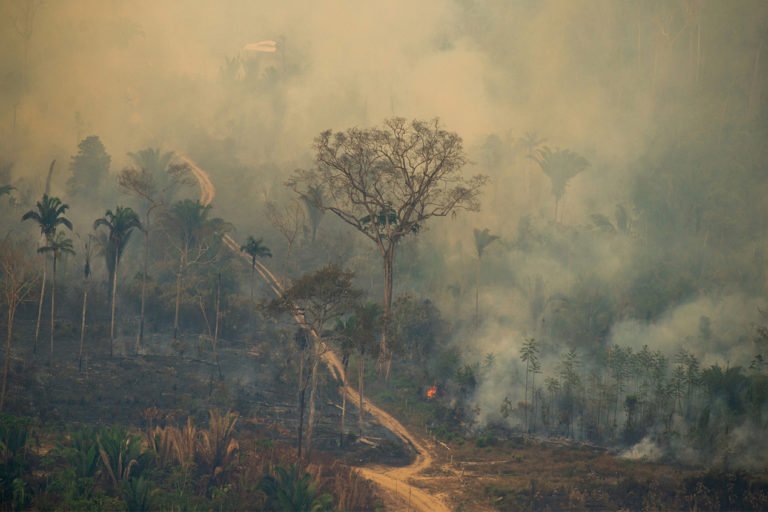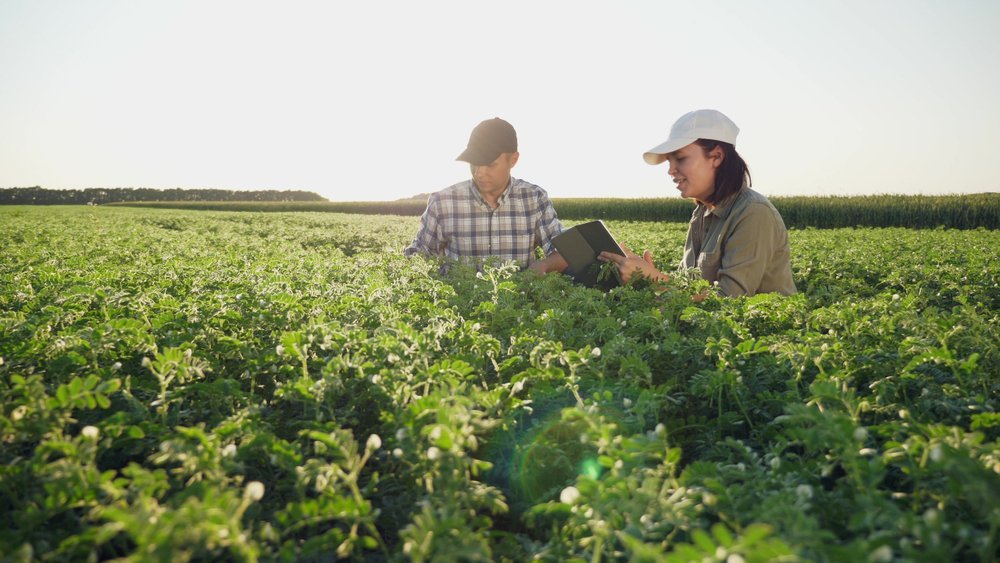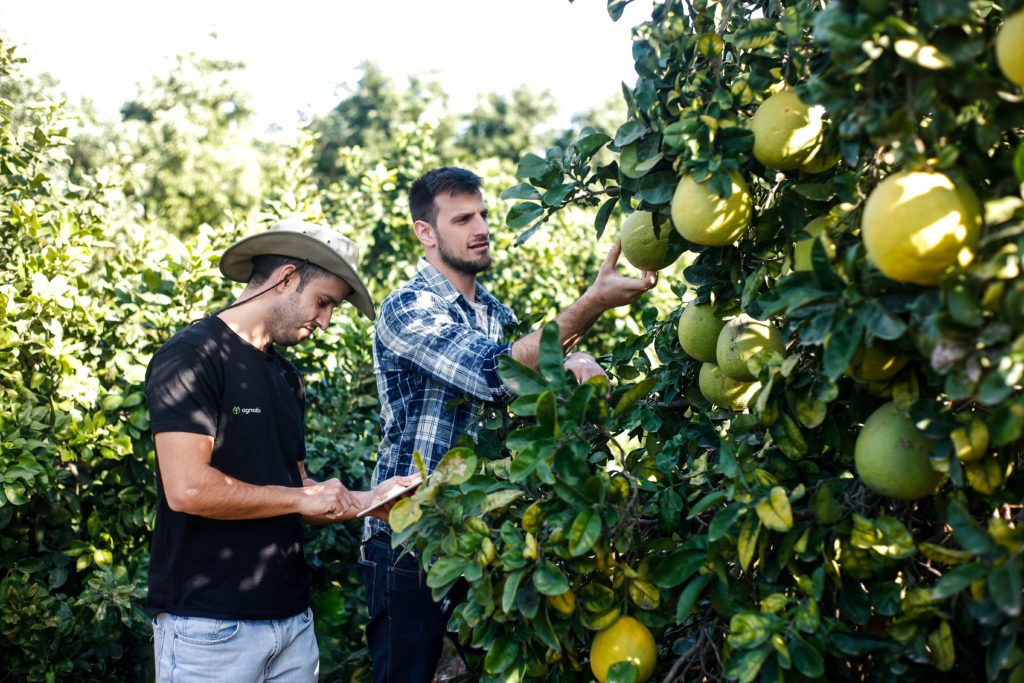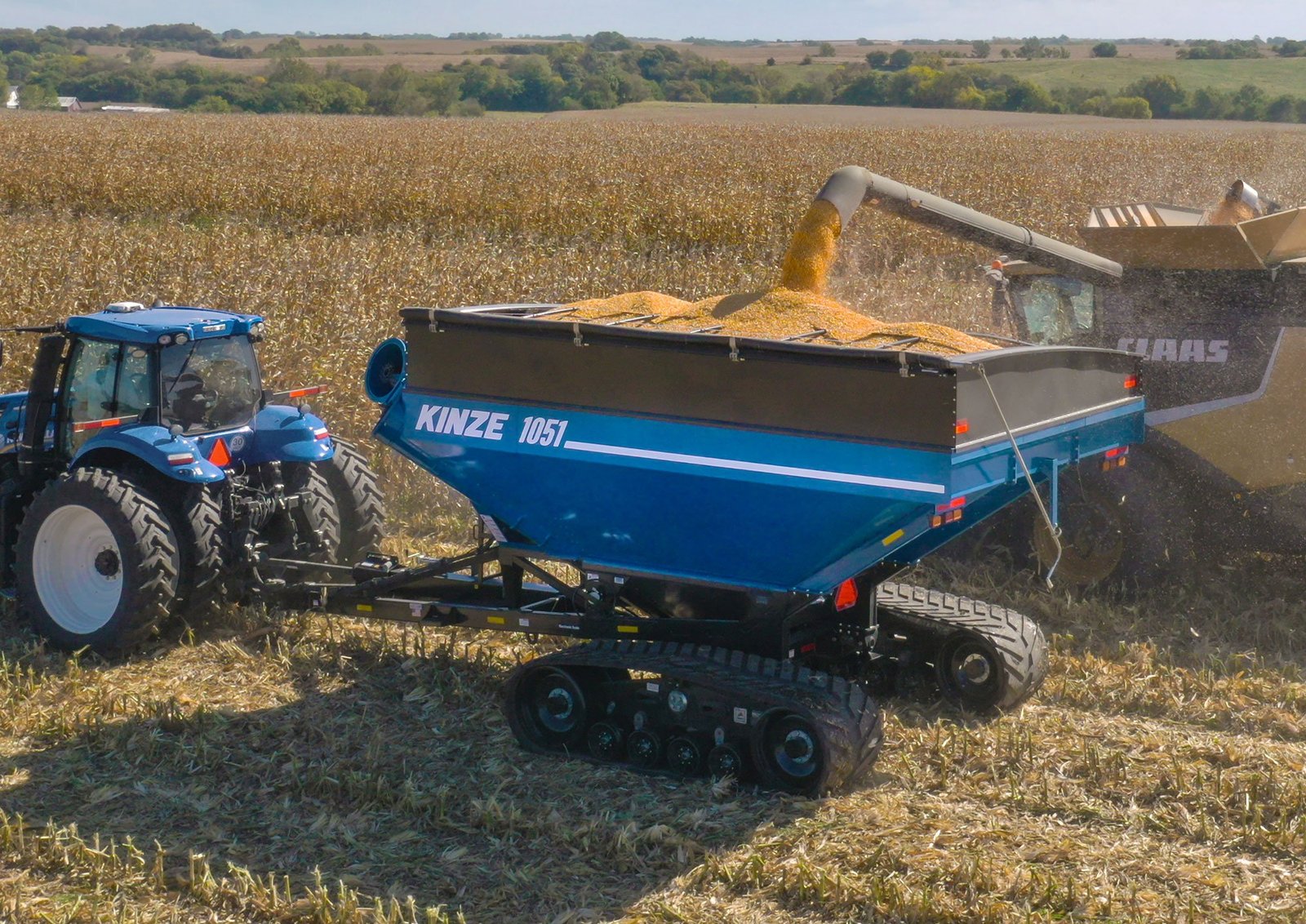- The Brazilian Amazon saw the highest number of fires for the month of June in 15 years, with 2,562 major fires detected, an increase of 11.14% over 2021.
- The first half of the year had 7,533 major fires, the most since 2019, according to data from the national space research institute.
- On June 23, the Brazilian government issued a decree banning the use of fires to manage forests throughout the country for the next 120 days.
- Experts say they’re skeptical about this ban, noting that similar measures failed to stop the burning in previous years, and say the weather is the only thing that can help curb the increase in fires as the dry season unfolds.
Smoke from fires in parts of the Brazilian Amazon are getting closer to cities. The combination of the highest number of forest fires in 15 years and highest ever deforestation rate recorded in the month of June, this year’s dry season is off to a fiery start, raising concerns about its peak over the next few months. With poor enforcement of environmental laws, scant funding for firefighting brigades, and a widespread sense of impunity for those responsible for the clearing and burning, researchers say the weather is the only chance to halt the forest fires.
There were 2,562 major fires detected this past June, the highest for any June since 2007, and an 11.14% increase over the same month in 2021, according to data collected by INPE, the national space research institute. For the first half of the year, there were 7,533 major fires detected in the rainforest, the most since 2019, when 10,606 major fires were recorded, INPE data show.
This is, however, just the beginning of the dry season in the Amazon, said Alberto Setzer, a researcher in INPE’s fire department. In a video call with Mongabay, he compared the data currently available with the opening moments of a soccer game, when it’s hard to predict an outcome, since most of the burning still hasn’t happened yet. The dry season, also known as the fire season, typically peaks in August and September.
“It’s like we’re in a soccer game that started with a very hectic first five minutes, but what lies ahead is unpredictable,” Setzer said. He noted that the use of fire to clear land is mostly illegal in Brazil; to legally do so requires a special permit that “almost nobody gets,” he added.
In face of the increase in forest fires and under international pressure, President Jair Bolsonaro issued a decree on June 23 forbidding the use of fire to manage vegetation across the country over the next 120 days. The presidential decree allows several exceptions: the use of fire to fight larger fires; in subsistence farming by Indigenous and traditional populations; in research that has the proper authorization; in phytosanitary applications; and in essential agribusiness that’s not located in the Amazon or Pantanal biomes.
Experts have greeted the decree with skepticism, however, noting that similar measures have been rolled out in previous years, without success. “I see this decree as an attitude just for show,” Ane Alencar, science director at the Amazon Environmental Research Institute (IPAM), told Mongabay in a video interview. “People will not adopt a decree because they will be outlaws if there is no law being enforced.”
She pointed to “a general and strengthened sense of impunity, with the dismantling of the control apparatus.”
“The feeling of lack of governance in the Amazon is felt and it is very high,” said Alencar, who also coordinates the mapping cooperative MapBiomas, which monitors land use in the country.
Unlike in the temperate forests of the U.S. West or the Cerrado grasslands closer to home, fire isn’t a natural phenomenon in the Amazon, the world’s biggest rainforest, said Rômulo Batista, Greenpeace Brazil’s spokesperson for the Amazon.
“Natural fire in the Amazon is very rare. So, being very rare, it always needs someone or something to be striking a match or lighting that fire,” Batista told Mongabay in a video interview.
A common reason for using fire is to prepare new pastures, clearing areas from depleted vegetation with a superficial fire that does not reach the roots, allowing for rapid regrowth of grass. The main problem, Batista said, is that this practice mostly happens in areas where the surrounding forest is also degraded, and therefore can easily catch fire.
Fire is also used as the finishing step in the deforestation process, where any remaining vegetation is burned after the more valuable trees have been removed. It’s also used to conceal traces of recent deforestation, Batista said.
Another reason, whose use has recently been growing, according to Batista, is the use of fire as the main tool of deforestation itself. The same area is set on fire repeatedly to burn all the vegetation, he said.
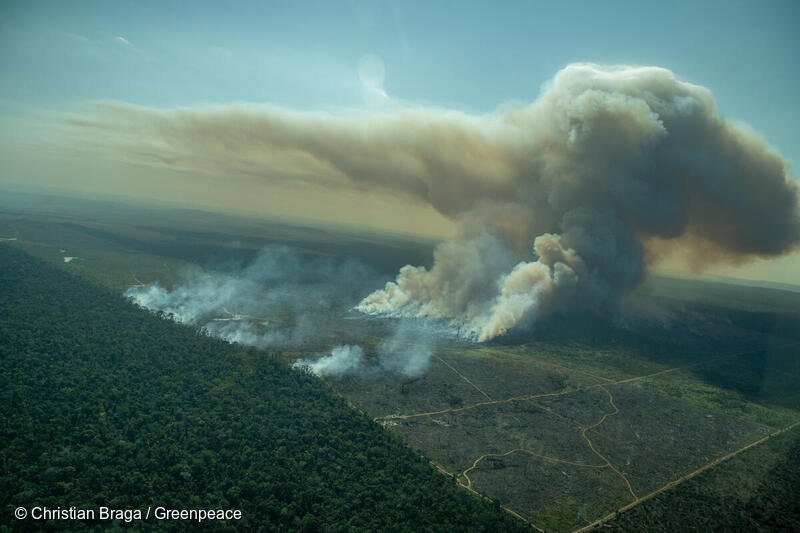
“I always like to understand fire in the Amazon as another side of the same coin as deforestation,” Batista said. Although the practice of using fires to clear remaining crops is being carried out less as no-till farming in Brazil has proved to be more economically viable, he added, it’s still widely used for clearing land for pasture.
Fires coupled with deforestation are a common tool for land grabs, IPAM’s Alencar said. INPE data show the state of Amazonas had the highest monthly rates of deforestation from January to June this year for the first time in history, which translates into 1,236 square kilometers (477 square miles) of forests torched. Alencar said this new trend is led by land grabbers, since the state is home to vast swaths of public lands.
After deforesting an area, invaders burn the remaining vegetation to erase any trace that a forest once stood there, then bring in cattle to demonstrate the commercial value of the land, and from there try to legalize their claim to ownership of the land, Batista said.
In terms of fires, the worst-affected state so far this year was Mato Grosso, with 7,414 major fires from January to the beginning of July — an increase of 21% over the same period in the previous year, and the most fires in the state since 2007, INPE data show. The state is the heart of Brazil’s cattle industry, which explains the use of fires to create pasture, experts say.
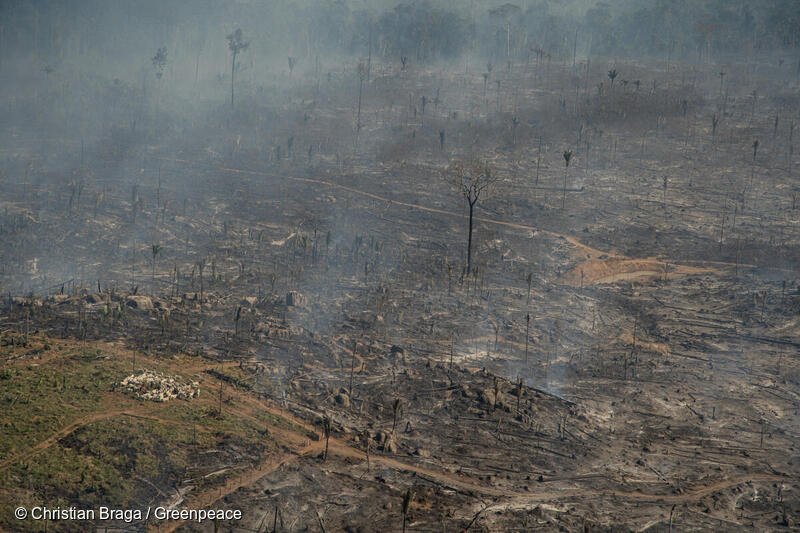
Researchers are now closely tracking conditions that could affect how forest fires develop over the course of the dry season. Setzer from INPE said the fire trend in the Amazon will mostly depend on three factors. First is the weather: if it rains more than the average for the season, using fire to clear deforested land becomes inefficient, he said.
The second factor is law enforcement, Setzer said. “The use of fire is illegal. All these cases that we see show infractions, environmental crimes, and it depends on how the authorities act in terms of the number of inspections, of fines. That has an impact too. When the inspection is very intense, the use of fire is reduced,” he said.
Also a factor is the economy, he added. Active markets tend to drive up land prices and the need for new frontiers for cattle pasture and soy plantations, which in turn could lead to more deforestation and burning, Setzer said.
In terms of the weather, the forecast for July-September shows a mixed picture. INPE’s center for weather forecast and climate studies, CPTEC, shows that the north and northeast regions of Brazil, home to most of the Brazilian Amazon, are expected to continue to see large amounts of rain, associated with the La Niña phenomenon. The center of the country and the south and southeast regions are expected to see rainfall below the historical average.
“Let’s wait, let’s see if the weather will help not to break new records [of forest fires],” Alencar said. The researcher said she is trying to hope that there will be less fires even if the weather is less rainy than average in previous years, which is the opposite of what is happening now.
However, Alencar said she fears the presidential elections in October could play a role in undermining fire prevention efforts. “If before there was no state apparatus paying attention and curbing illegal activities in relation to deforestation and burning, now during the elections … this is no longer a priority.”
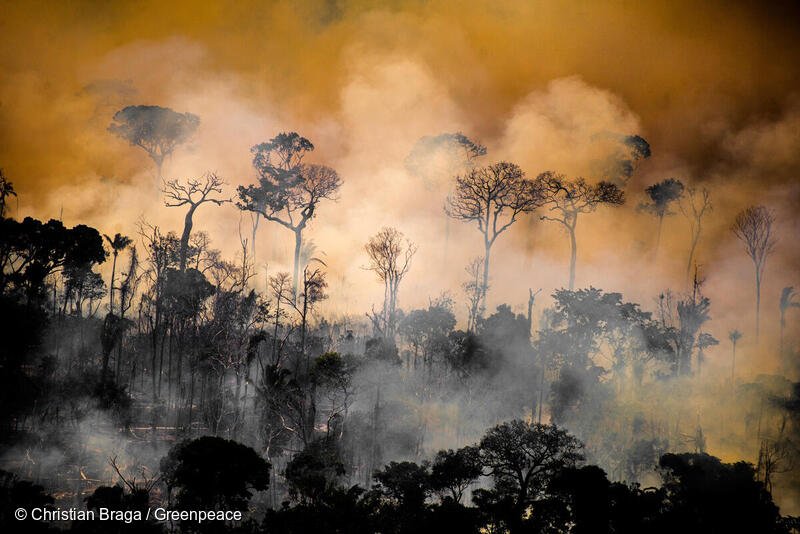
Despite all the challenges, Batista said, it doesn’t make sense to burn the most biodiverse forest in the world to produce beef and soy. “We will be held accountable by future generations if we continue with this mode of production that is characteristic of the economy of destruction that brought us here.”
You’re right about the use of “crops” here – I meant renovation of the lawn. They differentiate fires to burn grass, which is superficial and quick, allowing grass to regrow fast, from fires used for deforestation. In the first case, the area has already been cleared from the forest. Part of the reason for using “renovation” of the lawn is that fires help fertilize the soil, since the vegetation in the region is so rich, but we can change that because I don’t think it’s worth explaining all that.
Banner image: Fire in the Jaci-Parana Extractive Reserve, in Porto Velho, Rondonia state in 2020. Image © Christian Braga / Greenpeace.
FEEDBACK: Use this form to send a message to the author of this post. If you want to post a public comment, you can do that at the bottom of the page.


